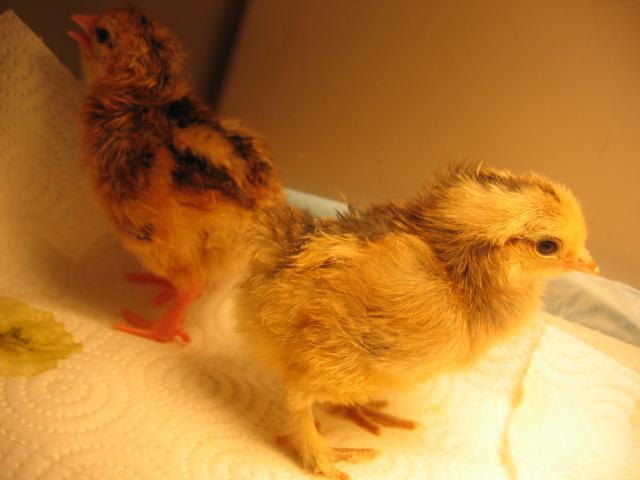I've noticed that some pics that get posted for breed/gender id are hard to work with because of blur etc. I thought it might be helpful to post some tips.
1) Auto settings on cameras are set for a distance of at least 4 feet for clear crisp shots. If you have a MACRO setting on your camera (often a flower symbol) this is the time to use it. It will allow you to focus within the 4 foot range. Otherwise you are best off backing away from the subject and using a photo editing program (Picaso is a free program available through Google that works nicely AND easily!) to crop the image down to show more of the subject.
2) The better your lighting the better the picture. Natural lighting with no flash works great when you want to get true colors and much detail such as feather patterns. Flashes can not only wash everything out and cause things to look much brighter, but it hides subtle details and I've noticed not all animals are fond of a bright light shining in ther eyes, even if just for a second. If you can't take them outside yet, try to find a nice sunbeam in your house, but beware drafty window seams.
3) If you can't get a good shot because they keep moving, try having someone help by holding the bird still or try to take the pictures while it is at rest or occupied with something.
4) Photo sizes. If you have windows XP there is a tool you can download.... http://www.microsoft.com/windowsxp/downloads/powertoys/xppowertoys.mspx
Image resizer This will allow you to resize your image (you can set it to make a new copy when it resizes) to common sizes for upload to phones, web etc. This is handy if you want to keep your original files large but would like a smaller one for other uses.
I hope these come in handy for BYC members. Happy photographing!

1) Auto settings on cameras are set for a distance of at least 4 feet for clear crisp shots. If you have a MACRO setting on your camera (often a flower symbol) this is the time to use it. It will allow you to focus within the 4 foot range. Otherwise you are best off backing away from the subject and using a photo editing program (Picaso is a free program available through Google that works nicely AND easily!) to crop the image down to show more of the subject.
2) The better your lighting the better the picture. Natural lighting with no flash works great when you want to get true colors and much detail such as feather patterns. Flashes can not only wash everything out and cause things to look much brighter, but it hides subtle details and I've noticed not all animals are fond of a bright light shining in ther eyes, even if just for a second. If you can't take them outside yet, try to find a nice sunbeam in your house, but beware drafty window seams.
3) If you can't get a good shot because they keep moving, try having someone help by holding the bird still or try to take the pictures while it is at rest or occupied with something.
4) Photo sizes. If you have windows XP there is a tool you can download.... http://www.microsoft.com/windowsxp/downloads/powertoys/xppowertoys.mspx
Image resizer This will allow you to resize your image (you can set it to make a new copy when it resizes) to common sizes for upload to phones, web etc. This is handy if you want to keep your original files large but would like a smaller one for other uses.
I hope these come in handy for BYC members. Happy photographing!



